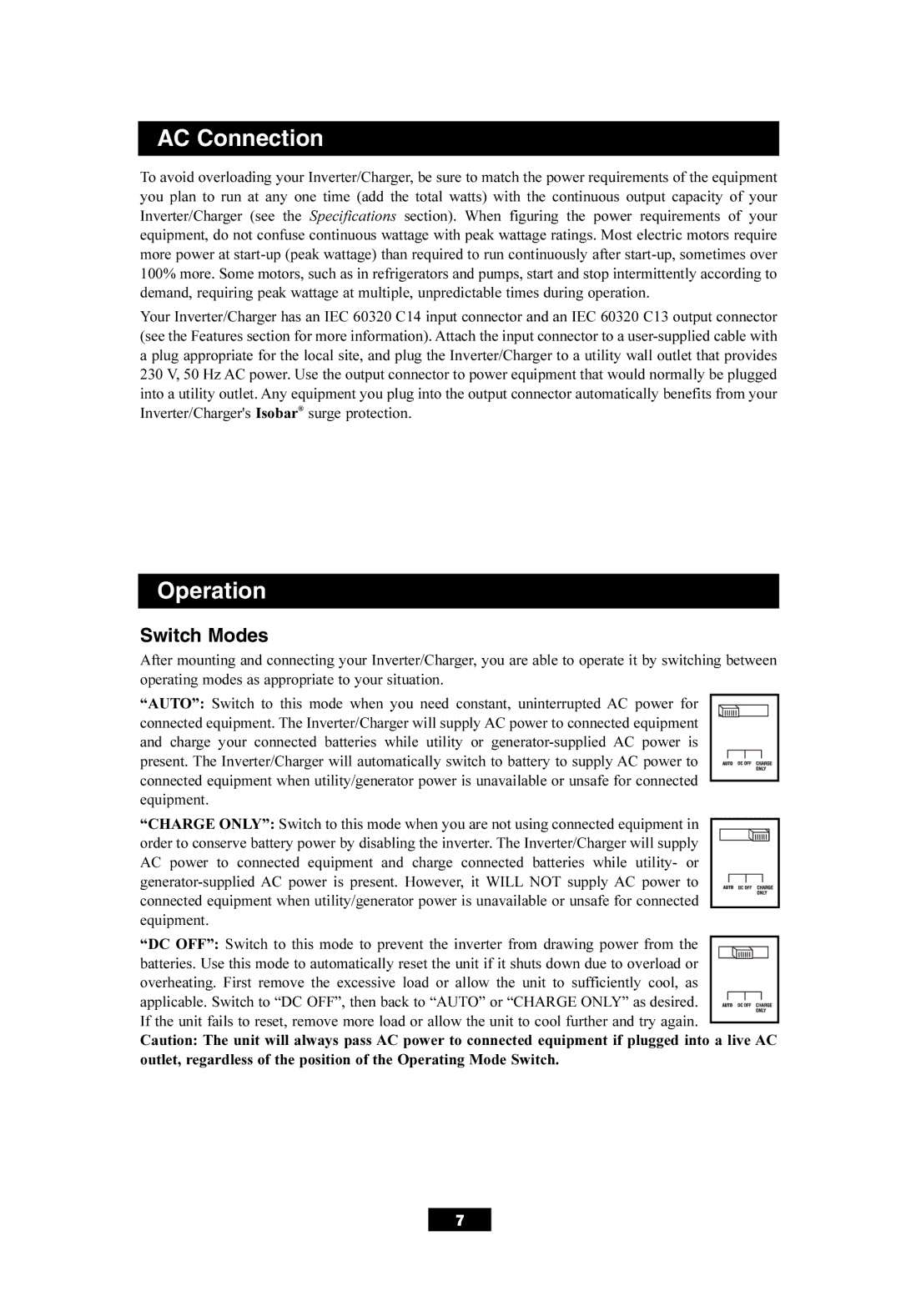
AC Connection
To avoid overloading your Inverter/Charger, be sure to match the power requirements of the equipment you plan to run at any one time (add the total watts) with the continuous output capacity of your Inverter/Charger (see the Specifications section). When figuring the power requirements of your equipment, do not confuse continuous wattage with peak wattage ratings. Most electric motors require more power at
Your Inverter/Charger has an IEC 60320 C14 input connector and an IEC 60320 C13 output connector (see the Features section for more information). Attach the input connector to a
Operation
Switch Modes
After mounting and connecting your Inverter/Charger, you are able to operate it by switching between operating modes as appropriate to your situation.
“AUTO”: Switch to this mode when you need constant, uninterrupted AC power for connected equipment. The Inverter/Charger will supply AC power to connected equipment and charge your connected batteries while utility or
“CHARGE ONLY”: Switch to this mode when you are not using connected equipment in order to conserve battery power by disabling the inverter. The Inverter/Charger will supply AC power to connected equipment and charge connected batteries while utility- or
“DC OFF”: Switch to this mode to prevent the inverter from drawing power from the batteries. Use this mode to automatically reset the unit if it shuts down due to overload or overheating. First remove the excessive load or allow the unit to sufficiently cool, as applicable. Switch to “DC OFF”, then back to “AUTO” or “CHARGE ONLY” as desired. If the unit fails to reset, remove more load or allow the unit to cool further and try again.
Caution: The unit will always pass AC power to connected equipment if plugged into a live AC outlet, regardless of the position of the Operating Mode Switch.
7
